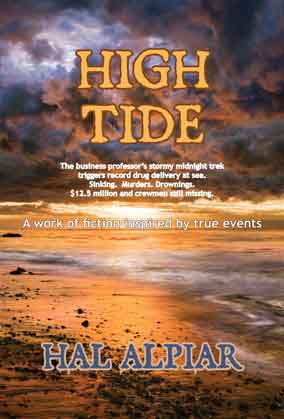Aug 30 2010
DECISIONS, DECISIONS . . .
First and third OR
first and reverse?
Given the enviable place to have runners when you’re up (first base and third base), you might think tonight’s post is another baseball story, or first down and a reverse hand-off in football . . . Sorry, sports fans: This one’s about an unusual car, and your unusual business decisions . . . but that’s getting a step ahead; let’s get back to the car.
I once had a choice of gear combinations for a car I was purchasing. I needed something to get back and forth to college, back and forth to work, and back and forth to parties (some things never change!). A friend of mine, Joe, had THE car for me!
It was an all-black 1954 Sunbeam Talbot 90. Now you may think that sounds like it should be on the kitchen counter for blending your okra and lima bean smoothies, but it was a car — a classic luxury vehicle in England in its heyday.
It had a sunroof, leather interior, rumble seat, running boards along each side, a hidden pull-out bar in the back, fog lights, six hidden compartments, and barely a mark. It was only a few hundred dollars “because it had a little gear problem,” but “had to be seen,” Joe said. He was right. It was a dream car. Almost.
The “little gear problem” meant I would have to make a decision. I could have only first gear and third gear, OR only first gear and reverse gear. Hmmm. First and third meant revving the thing up to 20-25 mph (which sounded like a dozen weedwhackers in flight), and then quickly “pop” it into third gear (it had “Synchromesh” for gear shifting with some ease) and cruise along, having completely by-passed the missing second gear.
OR . . . I could have first gear and reverse gear – always a good thing, said Joe, in case I ever needed to back up! I asked about speed, but was advised that “something had to go” and I could only have one or the other. With first and reverse, I would of course be able to parallel park, and get out of sticky situations (a date’s driveway?) without having to get out and push.
I could floor it in first and get to the weed-whacker noise level, then pop it into neutral and coast to a crawl, then pop it back into first and floor it again, etc. I took first and reverse. My decision didn’t please a lot of other drivers, but I couldn’t imagine never needing to go backwards.
Has your business been forced to go backwards in this economy? Were you prepared for it? Were you barreling along going forward when you first saw the telltale signs of government incompetence rewarding big dumb companies for doing everything wrong instead of smart small businesses for doing things right? Did you have to shake your head like a wet dog? Are you still?
Decisions that plan for future disaster (building an underground bomb shelter, investing in emergency crank-up radios with every news item about increased awareness of terrorist “chatter,” taking a loss on eBay for your world series ticket options for the Cubs and the Mets) are not always the best to actually implement, but thinking through contingency arrangements is always a good thing.
Developing an exit strategy for a brand new business is like having a pre-nuptual agreement. It seems like a stupid negative influence at the moment of highest positive attitude. It flies in the face of gut instinct. But it is not a bad idea, and it will almost always be of primary concern to any person or entity who is investing in the new business.
Leave your self and your business “wiggle room.” You may not need to build a bomb shelter, but you’d better know where to go and when if the business/market/industry or profession you’re involved with, or your state/region/nation continues to step deeper into an economical abyss. Have a plan. Keep it in your pocket. But have one. You might need to back up a little some day.
Failing to plan is planning to fail.
302.933.0116 Hal@BusinessWorks.US


